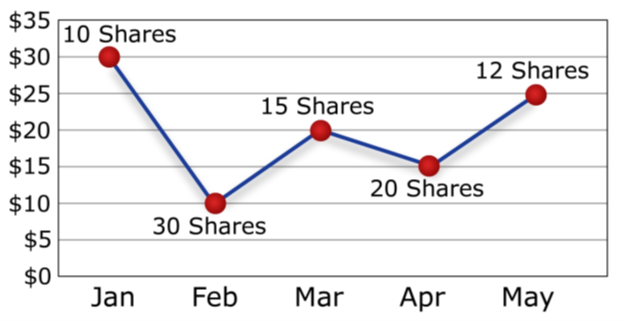Understanding Inflation as a Small Business Owner
When it comes to inflation, small businesses are more vulnerable to the challenges of rising prices than larger companies. Not only does it increase your cost of doing business; it may also deter your customers from spending as much as they usually would. It’s important to know that you’re not alone as a small business owner grappling with the effects of inflation. In this article, we’ll share the best inflation strategies for keeping your business running smoothly.
What Is Inflation?
Inflation refers to an overall rise in prices within a certain period of time. As prices increase, individuals’ and businesses’ purchasing power falls. For example, if it costs more to fill up your gas tank or buy a week’s worth of groceries, you have less money to spend on other things.
The federal government tracks inflation through the Consumer Price Index, which tracks prices paid for certain goods and services over time. As of March 2023, prices were 5% higher than the previous year.
The Federal Reserve’s target inflation rate is 2%–enough to keep the economy growing steadily each year without causing the kind of financial pain we’ve seen over the past year or so. That’s why the Fed has been raising interest rates, increasing the cost of borrowing money but also delivering higher interest rates for savers.
The current streak of inflation can be traced back to the beginning of the pandemic, when people stuck at home started buying more stuff than usual with the money they weren’t spending on going out. Demand for consumer goods such as furniture and more grew faster than supply, leading to higher prices. A labor shortage during the pandemic also caused many companies to increase their wages and salaries. Then the Russia-Ukraine war contributed to a spike in energy and wheat prices. With a global supply chain, disruptions in one country or industry have a ripple effect everywhere.
How Does Inflation Affect Small Businesses?
Just as a family’s budget can be squeezed by inflation, small businesses may have to make some changes as well. Unlike larger companies, small businesses may not have as much of a cash cushion either in savings or with their cash flow.
Higher operating costs (for labor, materials, services, utilities, etc.) may cut into whatever cash cushion you do have, forcing you to try and cut costs, raise prices for your goods and services, or both. Or you accept smaller profit margins to avoid passing costs onto your customers.
Inflation also causes uncertainty about the future. When prices change quickly or unpredictably, it’s harder to plan and forecast for the months or year ahead. Luckily, there are steps you can take as a small business owner to lessen any negative impacts of inflation on your business.

Budgeting For Inflation as a Small Business Owner
A solid budget provides a roadmap, with room for flexibility, for your business operations.
- Create and stick to a business budget.
- Leave room in your budget for monthly adjustments as costs rise and fall.
- Involve your employees–your budget and company’s success affect you and everyone who works for you.
- Make employees aware of changes to ensure everyone is working towards the same goal.
- Employees on the ground may also offer new insights or creative solutions.
- Overestimate your expenses. It’s better to have leftover funds than to not allocate enough.
- Don’t plan on running perfectly on budget–there will almost always be an unexpected cost.
- Understand the ebbs and flows of your market. Not every month will show growth–most businesses will have a “slow” season.
If you’re experiencing a cyclical or temporary cash flow shortage, a commercial line of credit gives you the flexibility to tap working capital when you need it, pay back what you borrowed, and use the credit line again.
Inflation-Proofing Strategies for Small Business Owners
Beyond budgeting, here’s what you can do to “inflation-proof” your business.
- Consider long-term vendor contracts to lock in pricing. That will help prevent your business costs from rising faster than inflation.
- Cut down on unnecessary expenses or switch to cheaper options, such as with office supplies.
- Communicate with your customers about any inflation-related challenges you’re facing and why you need to raise prices accordingly. Your customers will appreciate the honesty and they want to see you succeed.
- Re-evaluate your vendors. As your business changes, so do your vending needs. There may be a new vendor who can help you cut costs in your market.
- Invest in automation and technology. This can help reduce your overhead and increase productivity. For example, F&M Bank’s Cash Management services for businesses can help you automate everyday tasks such as depositing checks and more.

How to Stay Ahead of the Curve
We want to help your small business not just survive but thrive. Inflation isn’t the only curveball that life can throw your business. Here are some ideas for helping you get ahead.
- Invest in your employees. Losing experienced employees can set a business back, as well as the expenses that come with training a new hire. Focusing on retention will save you money in the long run and help protect you against the costs of recruiting and training during a time of inflation.
- Put extra money in an interest-bearing savings account. As the Fed raises rates to help fight inflation, let your extra cash work for you. It will take some time to see a gain, but in the long run you can come out ahead. For example, interest rates on Business Certificates of Deposit (CDs) are very competitive.
- Improve your Accounts Receivable Turnover Ratio. With the availability of ACH and credit card payment solutions, giving customers 30 or 60 days to pay a bill may be unnecessary. Shorter payment terms (such as 20 days), down payment requirements, and upfront payment for new clients with no credit history can result in an improved AR Turnover Ratio. You could use that increased monthly cash flow to reduce your dependency on credit cards. Depending on the increase in cash flow, improving your AR turnover may be enough to support additional staff who can drive more business.
- Build your inventory of supplies. Before price increases and shortages hit, have a stable of necessary supplies stored safely and out of the way to be prepared. This is especially helpful when preparing for a busy season such as the holidays.
F&M Bank can help your Virginia small business succeed!
F&M Bank has helped generations of small businesses in the Shenandoah Valley and we can help you, too. Check out testimonials from our business customers to see how we meet the banking needs of local businesses and help them grow. Contact us to discuss your specific pain points around small business inflation and find the right solutions to get back on track.







































